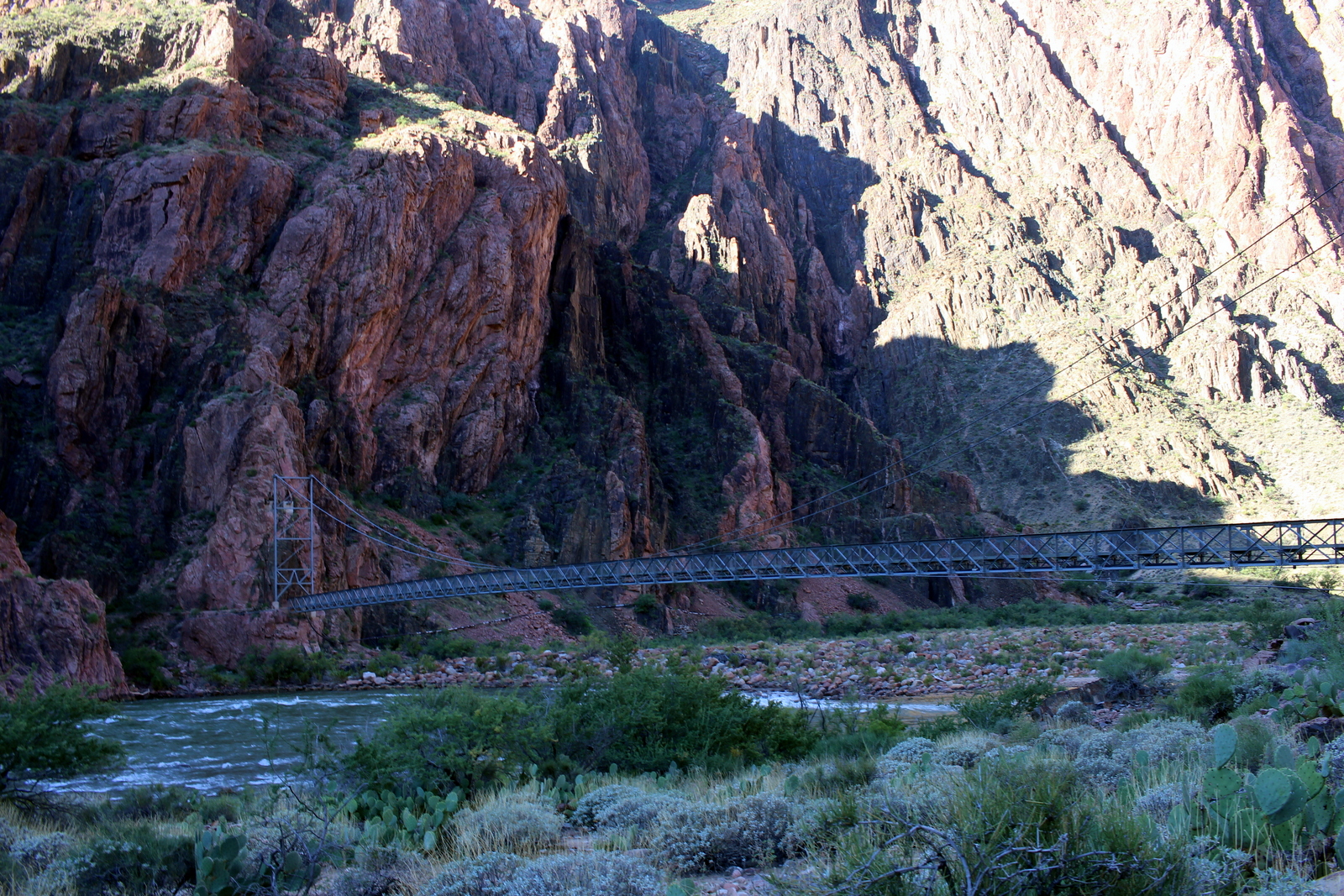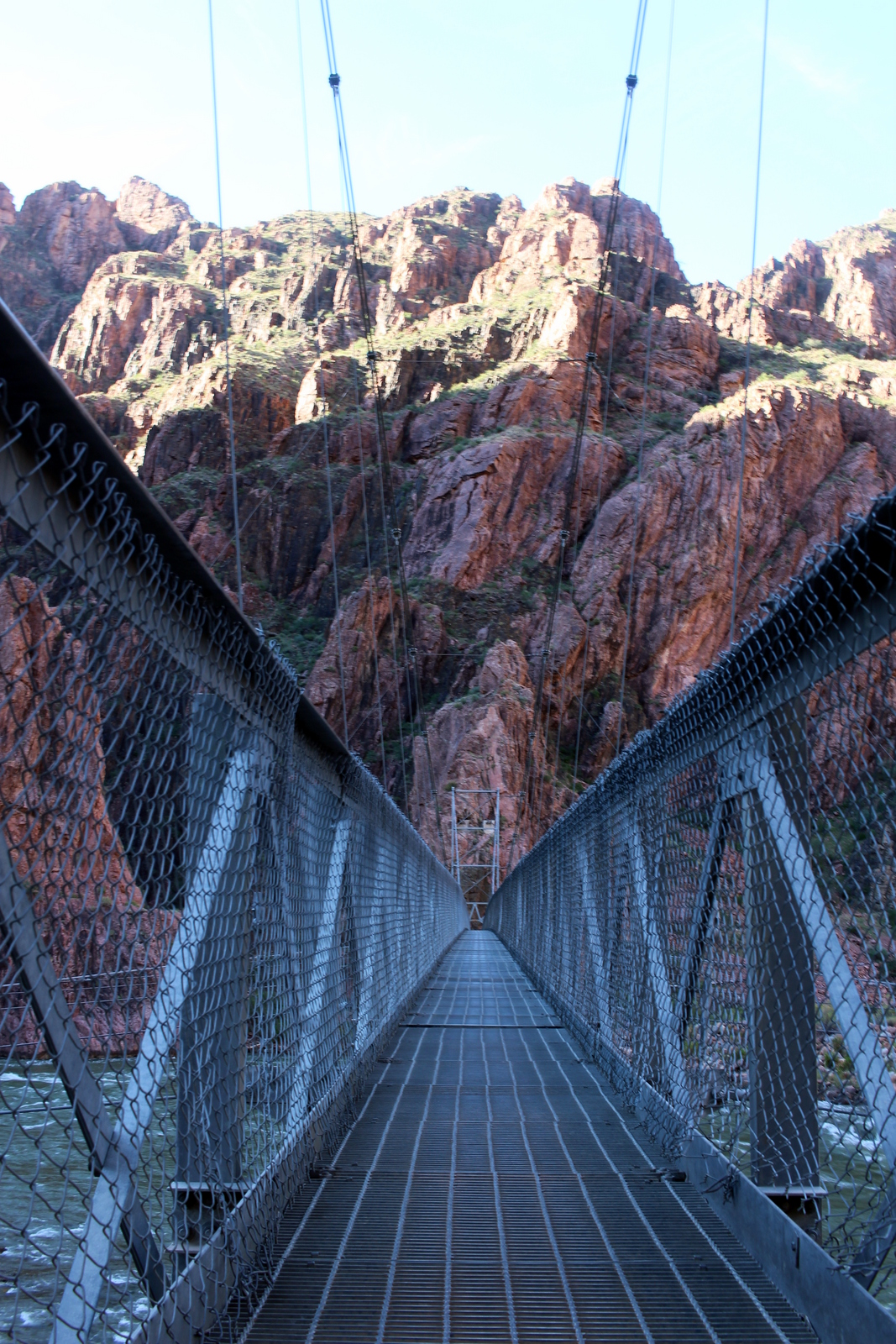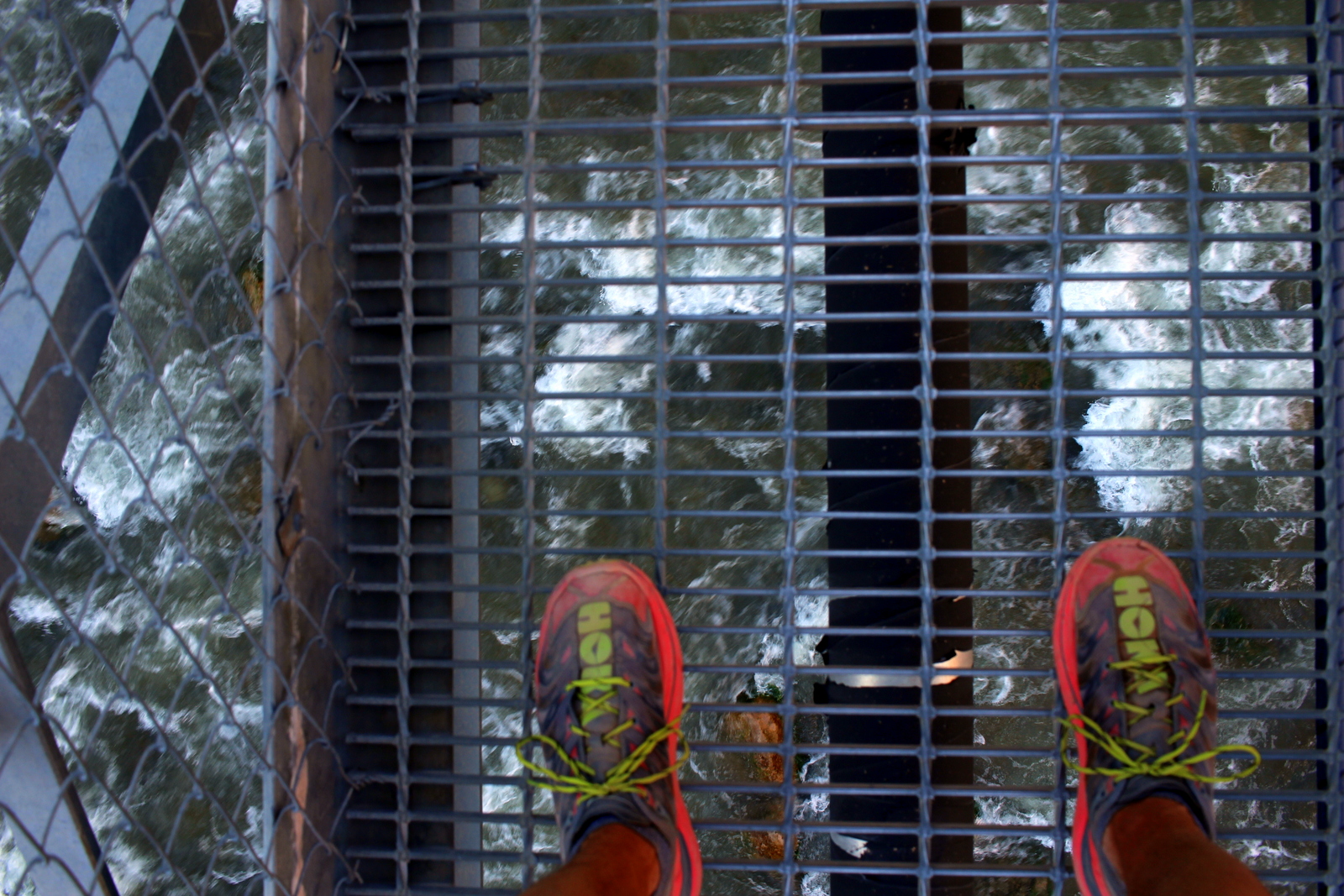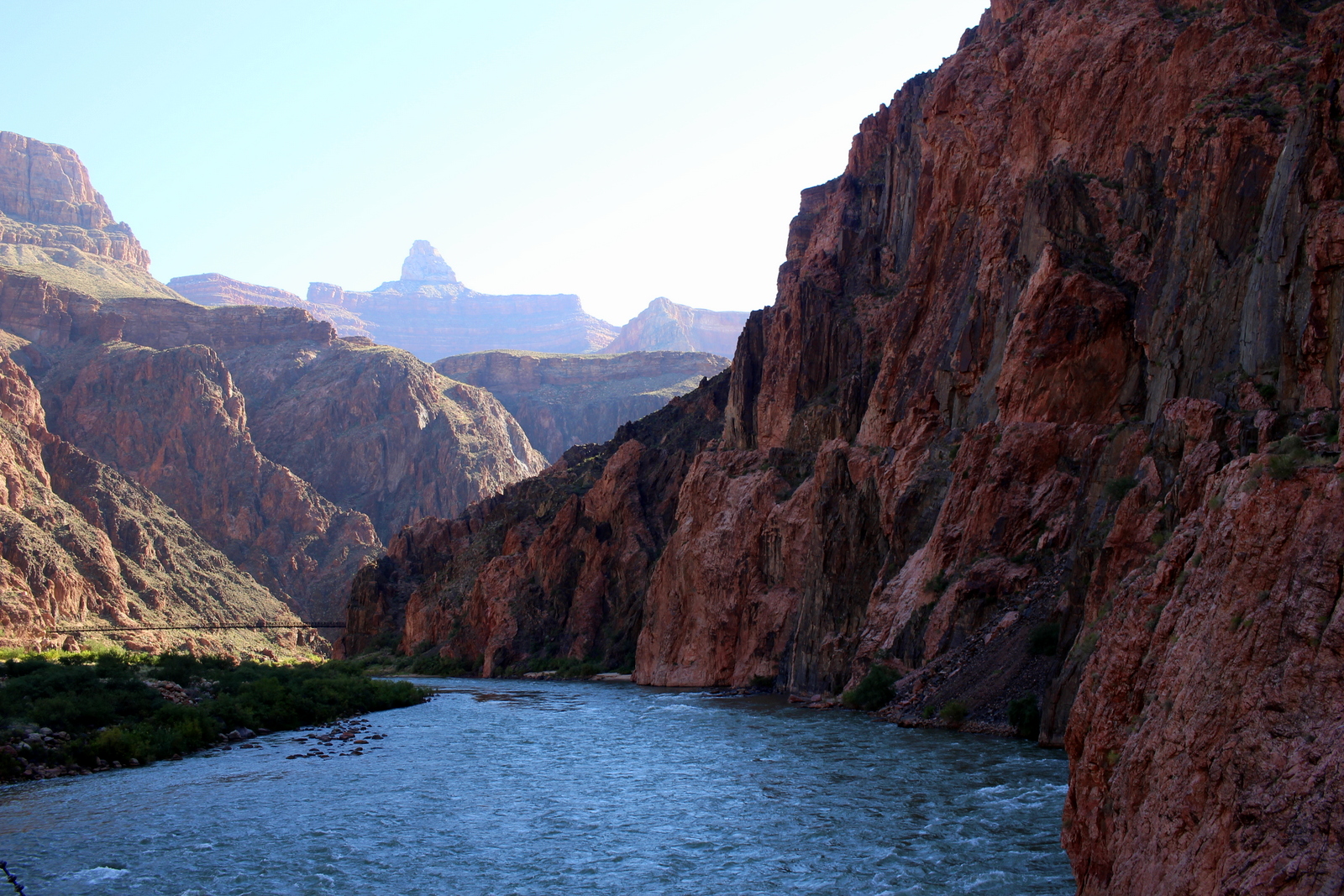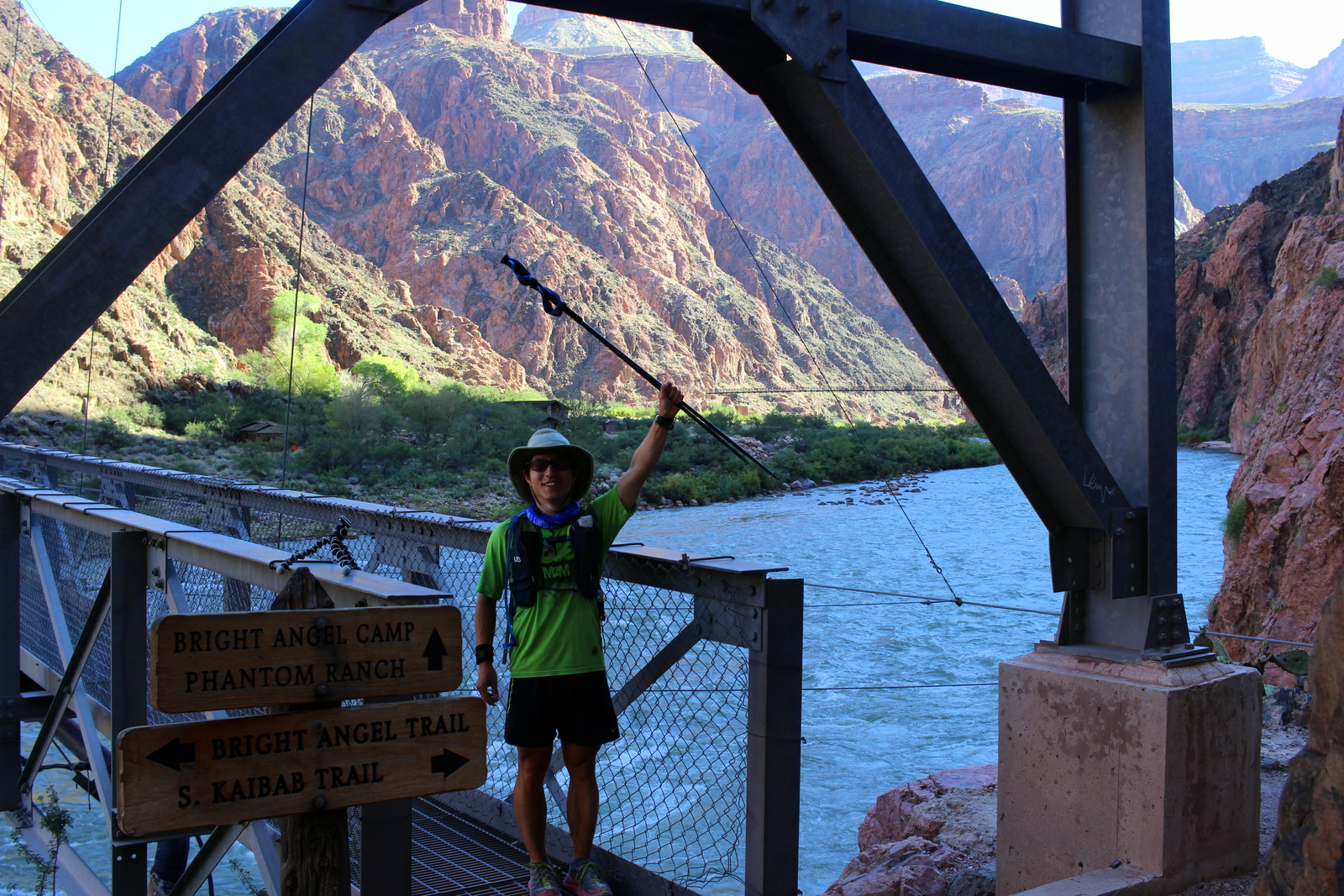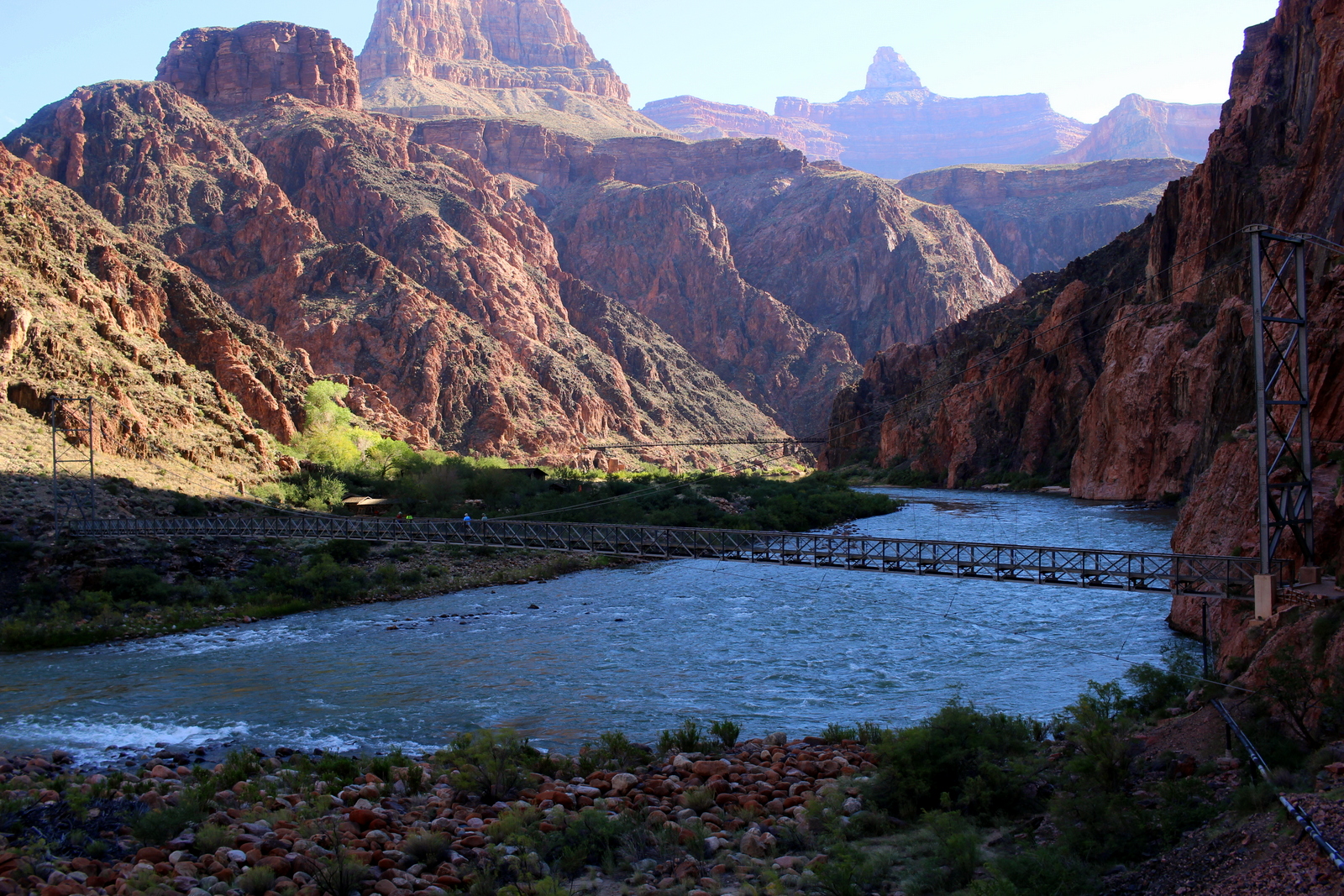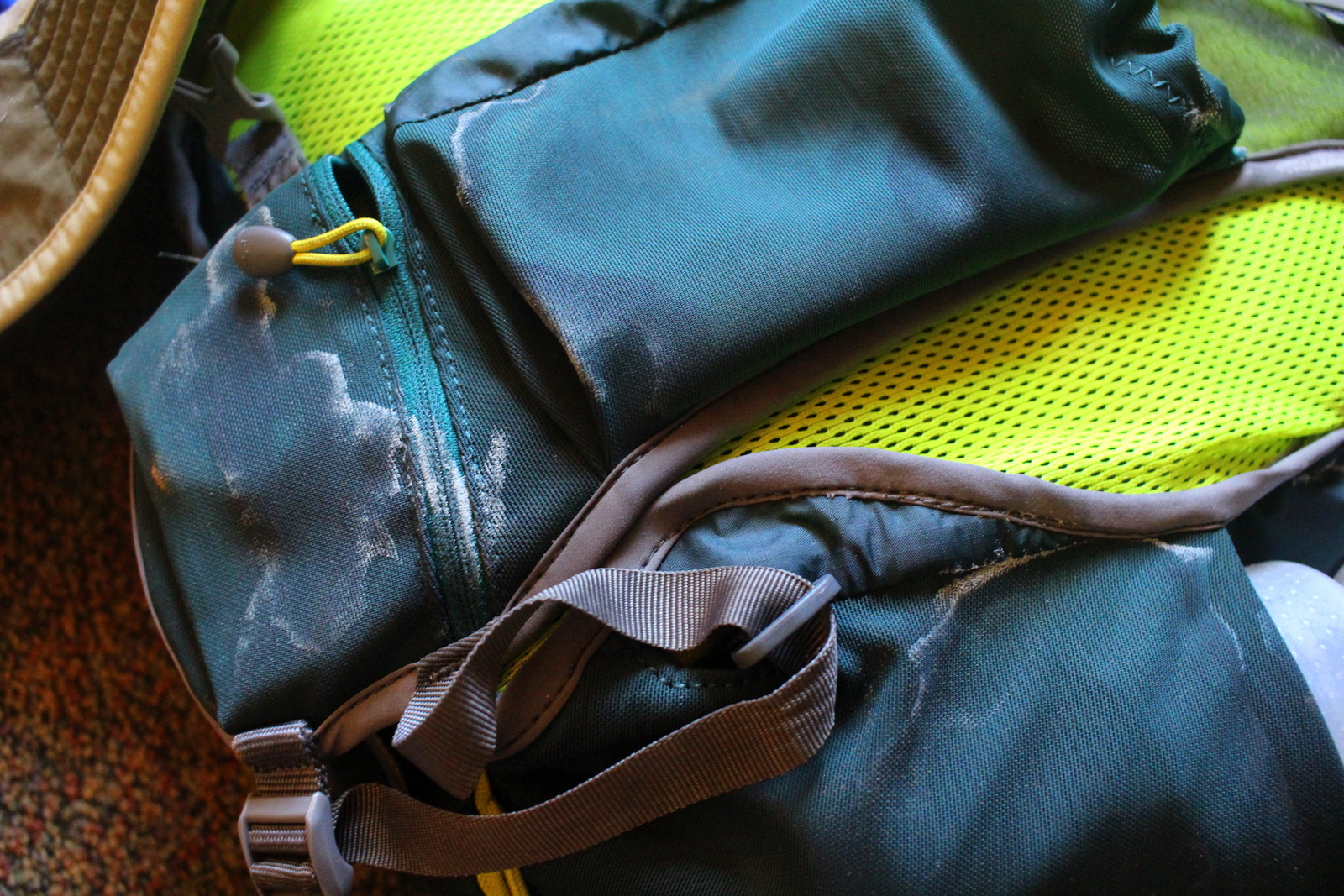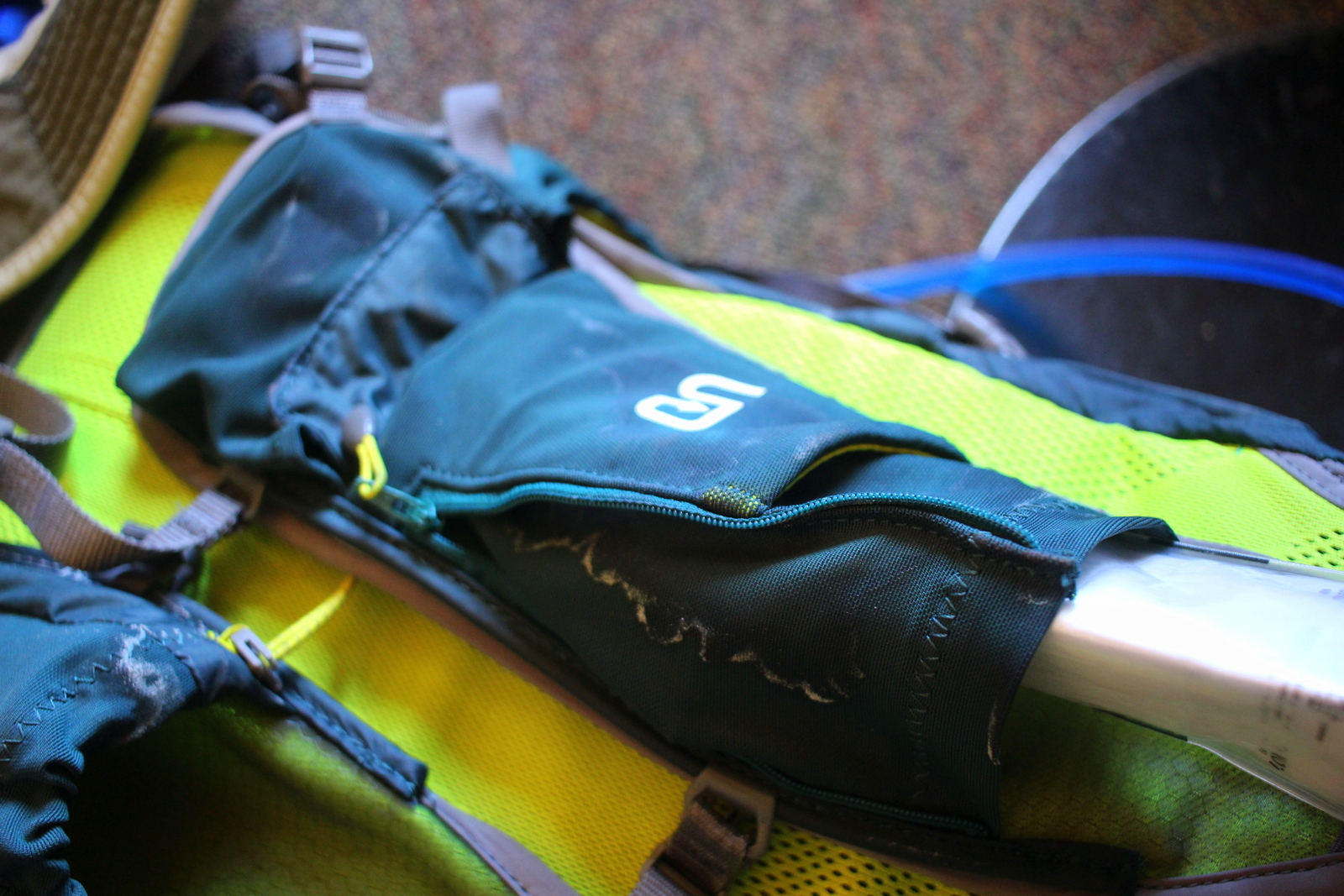I slept in this morning. I'd just run the Rim-to-Rim in the Grand Canyon, so I deserved it. Still, I woke up naturally at 6:30 a.m. Instead of cooking pancakes, I decided I'd try and get breakfast at the North Rim Lodge--eggs and sausage would be a nice recovery meal. I ended up eating huevos rancheros. Just what I needed. My table had an awesome view of the canyon. I took one last look before heading out.
I was now heading almost 400 miles to Petrified Forest National Park. Leaving the North Rim, I ended up passing over the Navajo Bridge, which marks the eastern edge of the Grand Canyon.
The bridge also marks one of the boundaries of the Navajo Nation. One of the aspects of our national parks (and of our nation's westward expansion) that I've wanted to learn about but haven't is our country's treatment of Native Americans. It's too easy to focus on the white explorers who "found" so many of the geological features that now make up our national parks without recognizing that westward expansion for one group simply meant displacement and marginalization for another group. I'll be adding this to the list of things that I want to look up after the trip is over (embarrassingly, I haven't even had the time to do the basic historical research on the National Park Service!).
I've taken thousands of photos now on this trip. Sometimes, I take a series of quick snaps and hope for the best. Other times, I slow down and really think about the photography principles I learned during my REI outdoor photography class. I know there's a school of thought that we should put away our cameras from time to time to truly experience the wonders of our parks. But I've often found that it is the camera itself that helps me truly see and feel a park. The conscious process of framing a shot makes me hyper-aware of every little detail. And, in searching for that perfect shot, you become more creative, and look at the environment from new perspectives. At the Navajo Bridge, I looked down and noticed the shadows crossing over the Colorado River and its banks. The algae-filled (?) green river provided a unique contrast with the reddish sand. This wasn't the "standard" shot of Marble Canyon, but it was a special one for me.
Of course, the Navajo Bridge also provides the more traditional view of the Marble Canyon area. The green water made the view particularly otherworldly.
Then it was time to make my way to Petrified Forest. While cruising on Arizona's open road, I mindlessly forgot to slow down in a work zone. A state trooper pulled me over (for the first time in my life), and I got a hefty speeding ticket. The rest of the way to Petrified Forest, I drove super carefully.
It was 5 p.m. when I arrived at the visitor center. The park closes at 6 p.m., so I knew I'd have to make my way through the scenic drive quickly. I was thankful that the park had two entrances--I could drive straight through to the other end in the hour I had left.
My first stop was the Painted Desert, an area of badlands inside the park (and also extending into the Navajo Nation). The setting sun painted the landscape today too.
I hopped back into my car and sped (within the 45 mph speeding limit, of course) to the next viewing point. An old car sat as a monument for Historic Route 66, one of the first highways in our national highway system, and a symbol of the road life.
I thought I'd be the only one leapfrogging from observation point to observation point. Turns out I was wrong. There were several groups of latecomers who were trying to cram everything in at the last minute. One pair--what looked like a mother-daughter combo--trailed me. Each time I pulled out of an observation point, their car would pull in. We'd wave at each other. In fact, as the hour winded down, they even started asking if it was "worth it" to stop at a point of interest. It was like a little game.
Driving for the last 15 minutes out of the park, I saw impressive badlands. These were a reminder of my time in the North Dakota badlands in the first week of my trip (i.e., what felt like ages ago!). Seeing such a similar landscape reminded me that, no matter how different the various regions of the country were, there were always common links and common features uniting them all.
One of the coolest stops I made was the Agate Bridge. This is a spectacular example of what it means for something to be "petrified". Essentially, a petrified object is one that has avoided the normal process of decay. All living things decay naturally--if exposed to oxygen. The petrified forests here consist of fallen trees that were covered in silica and ash that prevented decay. Over time, the trees hardened, while the softer rock around it washed away. What's left behind are stone replicas of those trees--and Agate Bridge was a particularly massive tree.
The park had several vistas from which you could see massive "forests" of petrified trees. The quotation marks are there because I didn't realize that the forest was a desert landscape dotted with tree trunks and segments. I was somehow expecting to see a standard forest. This was one of the only parks where knowing about the formation process was essential to grasping the true beauty of this place. Otherwise, I'd see this view below and think very little of it.
Other viewpoints provided opportunities to get close to the petrified trees. Despite their petrified nature, they looked very much like regular, living trees. There were warning signs all over the place--instructing visitors not to pick up, or stand on, objects, and to stay on trails--but I saw one too many visitors violating all of these rules. How shameful.
Without even realizing it, 6:00 p.m. had rolled around. The park rules required that, at that point, everyone needed to get back in their cars and head to the nearest park exit. So I did.
As the sun set and the landscape darkened, I grew more relaxed. I'd missed a few of the longer stops (i.e., stops requiring lengthy walks on trails), but I felt like I'd made the most of a very, very brief visit to Petrified Forest National Park. And I was happy.










































